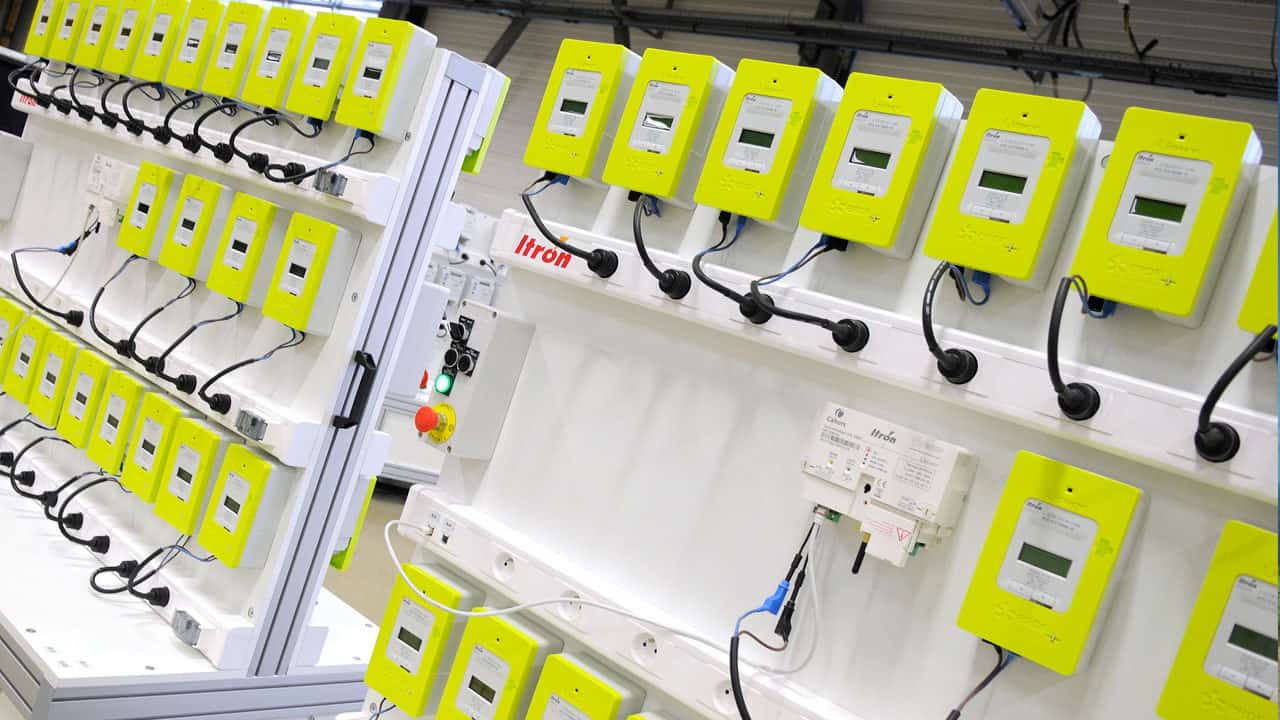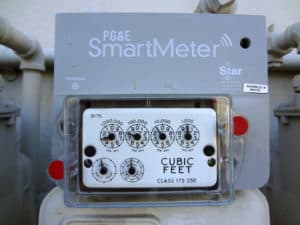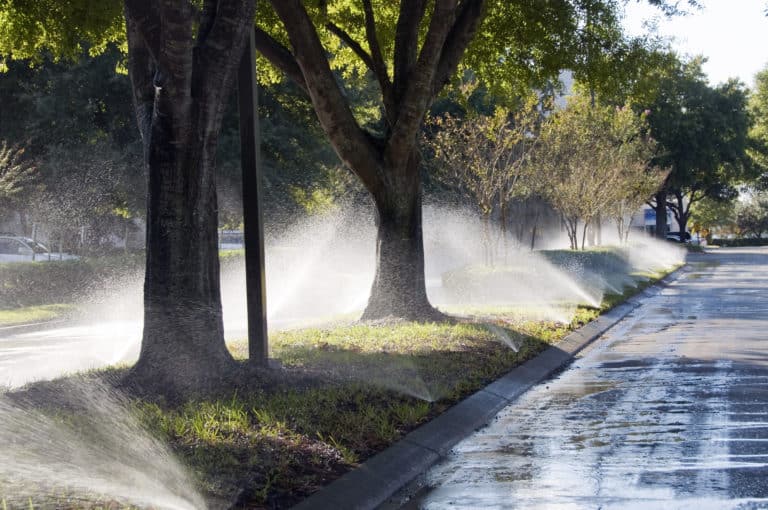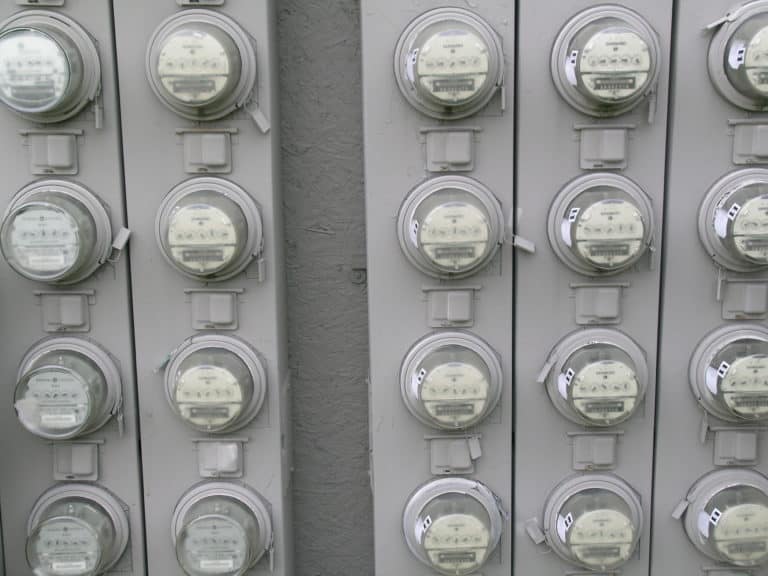
Among the many technologies, the suite of so-called smart technologies offers some key opportunities.
Because of limited data, today's systems can waste water and energy without users realizing the loss. It is not unusual for municipal water systems to lose 10% to 40% of their treated water through undetected leaks, for example. Smart technologies, including ubiquitous sensing and smart meters for electricity, gas, and water can add information to help reduce losses such as these.
The most common electricity meter measures energy in kilowatt-hours (kWh) through electromechanical induction, which spins a metal disk at a rate proportional to the consumption of electrical power. The meter counts the rotations to track total usage, and a reader manually records each month’s consumption. Inaccuracy plagues traditional electricity meters because of manual data management and a gradual slowdown of the disk itself through a phenomenon known as “creep.” Water meters use a simple rotating vane technology that records cumulative usage. Similar to the electricity meters, they slow down with time and require manual reading. Natural gas meters are similar to water meters.

With traditional water, gas, and electricity meters, usage periods and billing cycles fall out of sync. Bills typically include consumption totals for a thirty-day period. Processing, printing and mailing bills takes another one to two weeks, so the information customers receive typically includes activity from as many as five or six weeks prior. Water bills issued quarterly (not an unusual occurrence) exacerbate the problem even further. The complexity of bill format, with separate taxes, fees, riders, and other costs not directly related to consumption, clutter the ability to interpret total usage. Few people know how many kWh of electricity, cubic feet (or meters) of gas, or thousands of gallons (liters) of water they consume in a month or understand why.
Because the bill includes consumption information for the entire billing cycle, consumers are operating based solely on aggregate information. The bills typically do not differentiate by time of day, date, season, household occupant, or appliance. Without price signals on individual appliances, it is easy to waste electricity and to accrue expenses without realizing it. Consumers might understand their overall usage patterns, while remaining in the dark about which habits drive their consumption. More information empowers consumers to turn off appliances when unused or seek alternatives such as hanging clothes in the sun to dry.
Some municipalities read water meters quarterly, and until recently some municipalities such as Sacramento and Las Vegas lacked water meters entirely. Some utilities do not measure wastewater. Instead, they measure water use during the winter months and use that amount to estimate the wastewater bill for the entire year. Utilities operating under this system base their billing system on the assumption that all water used in winter returns through the sewer rather than absorbed by the soil during irrigation. Municipalities without water meters charge flat fees based on the cost of infrastructure. Flat fees encourage consumption since there is no price penalty for wasteful use of water.

The Internet revolution of the 1990s dramatically reduced the costs of information technologies and opened up the pathway for ubiquitous sensing in the utility sector. Smart electricity, gas, and water meters can monitor time of use and the consumption of particular appliances. Smart water meters can differentiate between indoor and outdoor; heated and unheated; treated water, gray water, and black water; and piped water and water collected on-site. A revolution in information technology, software services, and smart metering will upend conventional infrastructure approaches, as pipes and wires become high-tech industries.

New information could empower utilities and consumers. Consumers could track their own consumption and could also potentially track particular household members, which might be valuable for parents teaching their children resourcefulness. Detailed information about water and energy usage can also identify leaks and broken appliances. Utilities can integrate information with disaster and outage response, maintenance schedules, and meter reading. Using telemetry rather than hundreds of manual meter readers, utilities can install meter-reading software and hardware in vans that can be driven through service areas. Homeowners benefit by fixing problems before they get worse, reducing the risk of fire in case of gas and electricity problems, and mitigating damage from water leaks and floods. For grid operators, real-time information helps to balance supply and demand, which is particularly relevant for electricity markets. For on-site generators such as rooftop solar panels, the smarter meters could track how much power homes provide back to the grid to account for credits due.
Smart meters and appliances enable smart billing and automated pricing. In the United States, prices for electricity should increase during summer afternoons when air conditioners are running. In France, electricity prices should increase in the evenings in winter when electrically heated homes cause demand to spike. Water prices should increase in the dry seasons to correspond with higher demand for irrigation at a time when supply is scarcer. With time-resolved metering, utilities could also implement time-of-use (TOU) pricing. These price tiers could have off-peak and on-peak price signals to shift demand across the hours and days.
Smart meters allow direct communication between smart appliances and smart utilities. Utilities can turn off nonessential appliances such as pool pumps or water heaters automatically during peak loads or high price times of day to save energy and shave peak demand. In France, the ability to turn off more than thirteen million smart electric water heaters saves 3 gigawatts (GW) of demand.1Eric Lajoie-Mazenc, “Which Technologies for Hot Water in France for 21st Century?” (presentation, ACEEE Hot Water Forum, Berkeley, CA, May 21, 2012). New technologies also democratize the infrastructures, allowing third-party vendors into the system who sell services that help consumers reduce their expenditures. These energy service companies (ESCOs) help outfit and manage buildings in the commercial sector, reducing consumption and saving customers money. The ESCOs earn revenue based on a portion of the savings—the more they save their customers, the more money the ESCOs earn, a business model that is enabled by more data. For the residential sector, the open data stream will empower consumers with a clear, digital readout of real-time, appliance-specific, and cumulative consumption information to inform their behavioral and purchasing decisions.
“A single smart meter reporting every 15 minutes generates 400 megabytes (MB) of data per year. Therefore, one million customers generate 400 terabytes (TB) of data annually for the utility to manage. The influx of data presents certain challenges to the utilities but also improves the resiliency of the grid, reduces response time, and gives consumers better insight into their consumption habits.”
Lynda O’Malley, The Evolving Digital Utility: The convergence of energy and IT
Utilities must be prepared to handle the influx of information from a smarter grid, in terms of both computing power and in terms of human resources. Conventional meters have two data points monthly: one data point at the beginning of the month, and another data point one month later. A smart system collects about three thousand meter readings per month, so new software and data management capabilities will be needed for utilities upgrading to newer systems.
Image Credits: Courtesy/Itron; Eric Broder Van Dyke/Shutterstock.com; John Panella/Shutterstock.com; Cedric Crucke/Shutterstock.com.
Update your browser to view this website correctly.Update my browser now